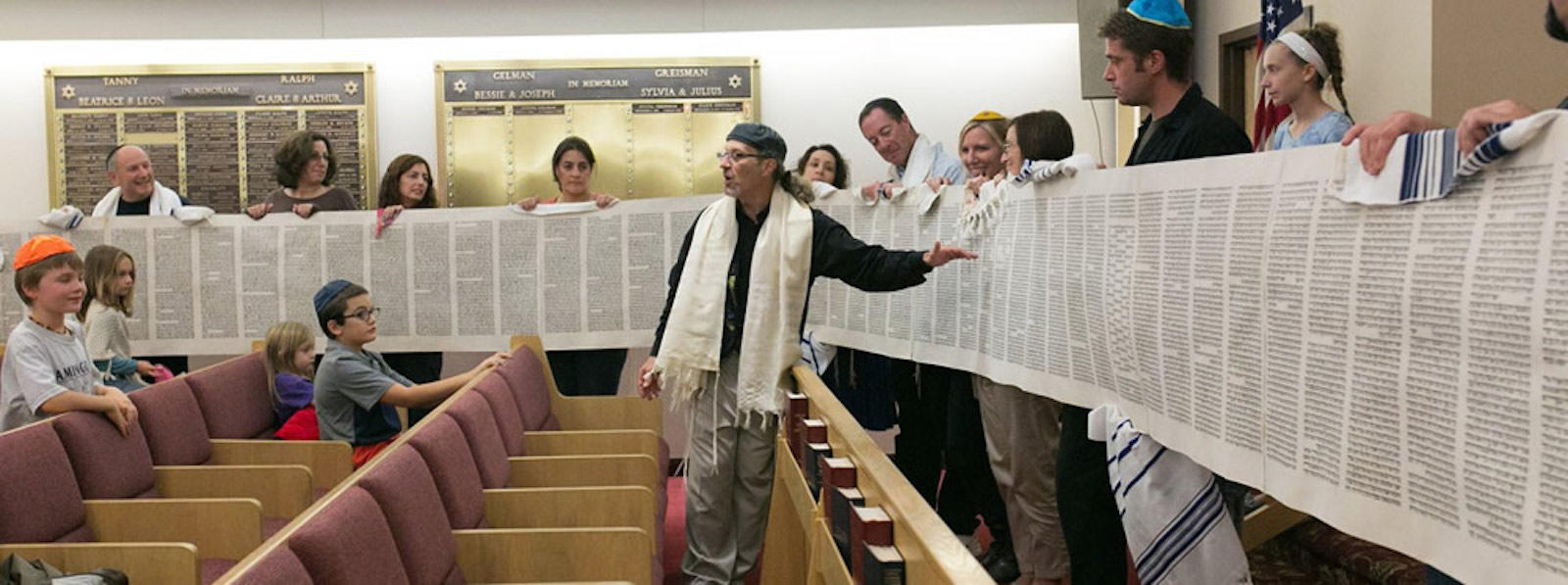The holiday of Sukkot concludes with an additional festival. The declares that at the end of the seven days holiday of there should be an eighth “day of assembly” (Shemini Atzeret, see Numbers 29:35). Why should there be another, additional holiday immediately following the seven days of Sukkot which have just been celebrated? According to a rabbinic folktale, Shemini Atzeret is a final and additional day of spiritual celebration of the close relationship between God and the people of Israel (see Rashi’s commentary to Leviticus 23:36).
How Shemini Atzeret and Simchat Torah Differ from Sukkot
Unlike on Sukkot, the lulav and etrog are no longer picked up and waved on Shemini Atzeret, and some people no longer eat meals in the sukkah. In addition, no hoshanot poems are recited, there are no more hakafot (processions around the synagogue), and the day itself is called a different holiday in prayer services. However, like Sukkot, a special prayer for rain is recited, and a short petition for rain is added to the daily prayers and recited daily until the festival of Passover in the spring, when the rainy season in the land of Israel concludes.
One Day or Two?
Although Shemini Atzeret is a one-day holiday in the Torah, among traditional Diaspora Jews, Shemini Atzeret is a two-day festival. However, during early medieval times, the second day of Shemini Atzeret began to develop a unique character and pattern of celebration. In a tradition that dates back to Babylonian times, the entire Torah is read in a yearly cycle of readings. In early medieval times, the second day of Shemini Atzeret became the day on which the final Torah portion of the year would be read and the very first Torah portion begun, all over again. Therefore, this day became an occasion for rejoicing and an opportunity for demonstrating the Jewish community’s love of the Torah. The day itself took on an additional name, Simchat Torah, the day of “rejoicing in the Torah.” In Israel and among Diaspora communities that only celebrate one day of holidays, Shemini Atzeret and Simchat Torah are celebrated as a combined festival.
What Happens in Synagogue
The Simchat Torah festivities begin at the evening service when the doors of the Ark are opened and all of the community’s Torahs are brought out. The congregation then recites liturgical poems and joins in a procession around the synagogue, dancing and singing in honor of the Torah. As on Sukkot, each procession is called a hakafah.Seven hakafot are celebrated with flags waving and then a selection from the end of the Torah is chanted. Due to the raucous nature of the celebration, it has become customary to involve entire families in this celebration, especially children. Oftentimes the celebration and dancing moves from the sanctuary into the street, in a public show of devotion to the Torah and pride in being Jewish. Some communities use this opportunity to unroll a whole Torah scroll as the congregation stands in a circle holding it.

Help us keep Jewish knowledge accessible to millions of people around the world.
Your donation to My Jewish Learning fuels endless journeys of Jewish discovery. With your help, My Jewish Learning can continue to provide nonstop opportunities for learning, connection and growth.
The following morning the festivities are repeated. The final Torah portion is read and repeated as often as needed in order to provide an opportunity for each and every person present to receive an aliyah to the Torah. Whether called up as individuals or as small groups, it has become customary for everyone to receive such an , including the children who are too young to be called to the Torah. The last person to receive an aliyah from the end of the Torah is given the ceremonial title of “bridegroom” or — for women receiving the aliyah in egalitarian congregations — “bride” of the Torah (hatan or kallat Torah). When the reading is completed, a second scroll is unrolled and the person to receive the first aliyah from the Book of Genesis is given the ceremonial title of “bridegroom” or “bride” of Genesis (hatan or kallat bereshit).



